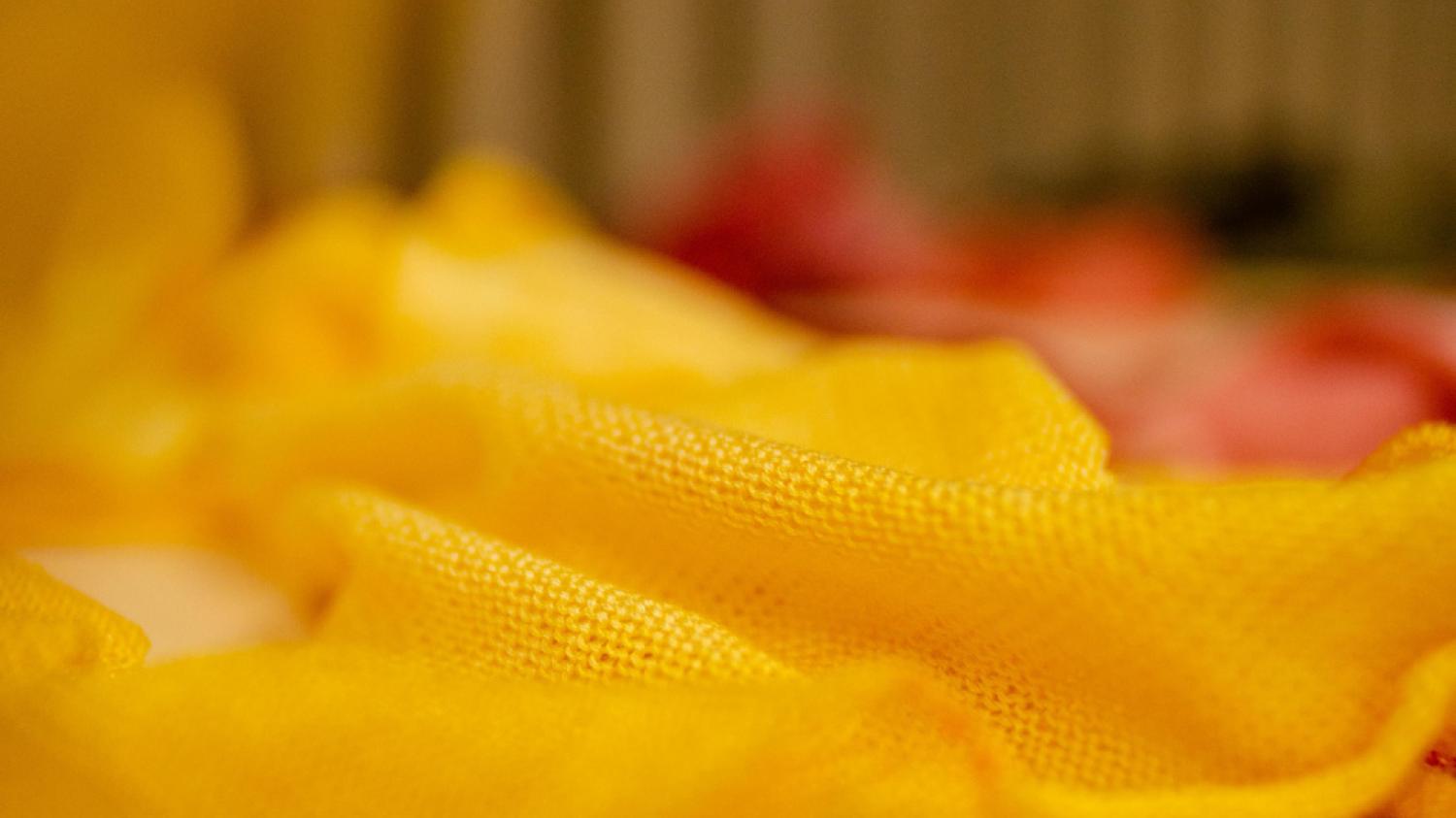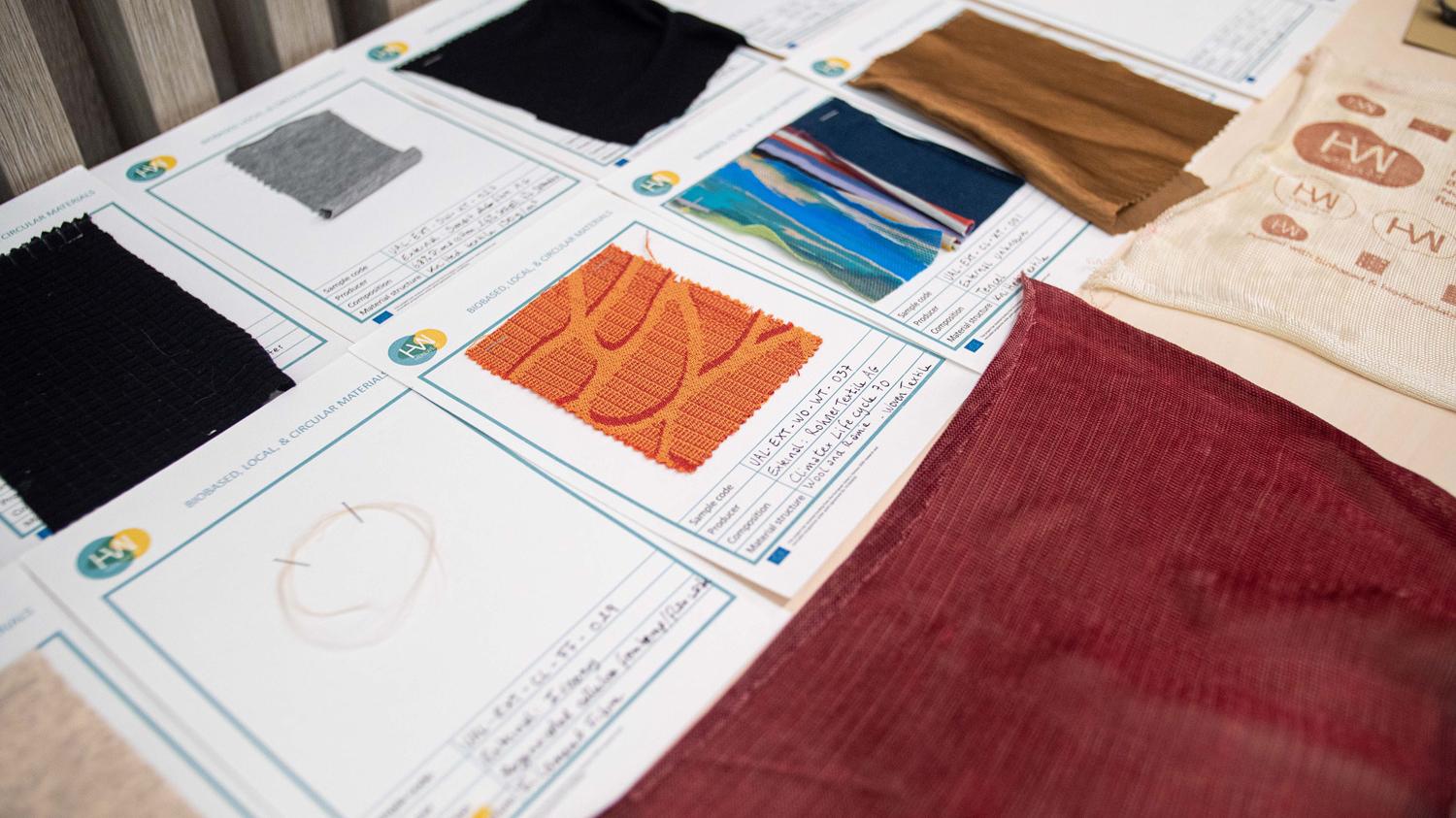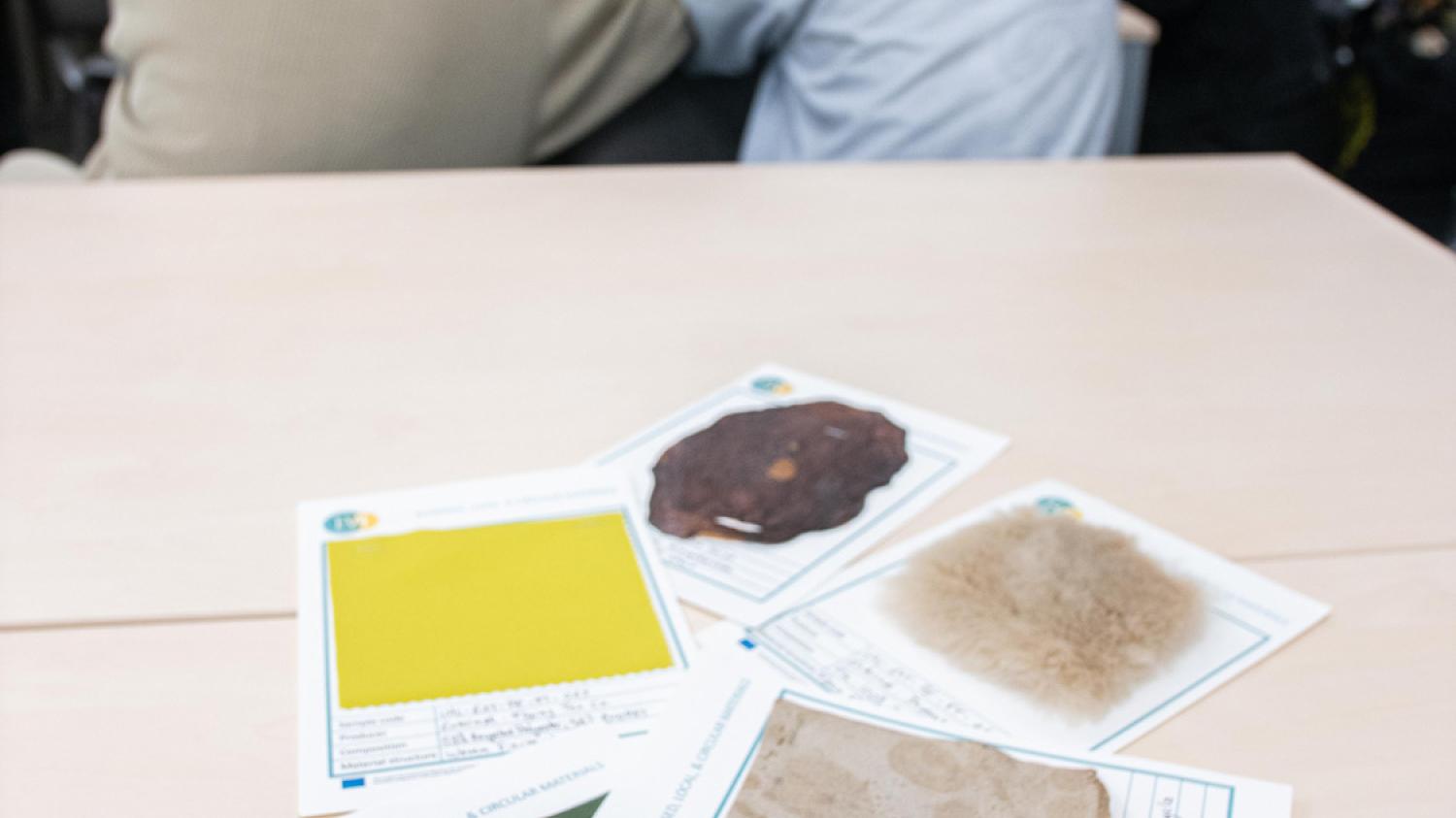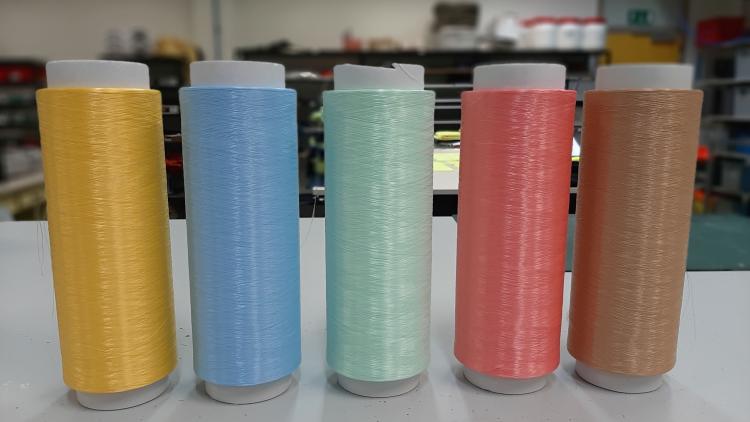Bio-based Materials: What are they?
Bio-based textiles are an exciting category of materials which encompasses natural fibres and biosynthetic fibres, transformed from biomass, alongside other innovations such as biofabricated materials.
In the HEREWEAR project, two types of biosynthetic fibres have been developed and improved for fashion applications: man-made cellulose from wheat straw, and biopolyester from sugar cane. Yet the learning and recommendations on how to design with bio-based materials extend to a larger range of materials that support the transition away from harmful fossil-based resources. The HEREWEAR bio-based material collection shows a selection of these materials and prompts conversations on how they can best be used for bio-based, circular and local textiles and clothing.
What are bio-based materials?
The ISO standard definition of bio-based materials is a material that is derived fully or partly from recently captured carbon or biomass (renewable organic material that comes from plants and animals). Bio-based materials are never derived from fossil-based resources.
Bio-based fibres for use in textiles can occur naturally in plants (such as hemp or flax) and mechanically extracted, or can be made from biomass sources which is transformed into fibres using chemical processes.
Why do we need bio-based materials?
To achieve decarbonisation the textile industry needs to transition away from the use of fossil-based fibres, such as conventional polyester and nylon. Some alternatives can be found in the biobased materials industry.
The lowest impact options are made from biomass derived from agricultural byproducts and other abundant renewable resources. These lower-impact resources can be transformed into fibres, avoiding additional land and resources required for food production. Using locally abundant biomass also means that resource use can be localised, avoiding global transportation and the unintended impacts of resource extraction.
How do you use bio-based materials?
Bio-based materials may have different properties to conventional materials. When working with these materials, designers, specifiers and manufacturers must take these differences into account in the design and production of yarns, textiles and garments.
It is also important when selecting bio-based materials to be aware that they each have different environmental impacts, and bio-based does not mean biodegradable.
Knowledge of where and how the fibres or biomass was extracted and transformed, as well as how they might be recaptured for future use, are all essential considerations to the appropriate application and use of bio-based materials.
What to do next
Suggested reading & viewing
- Biofabricate and Fashion for Good (2020) Understanding ‘Bio’ Material Innovation: A primer for the fashion industry:
https://reports.fashionforgood.com/wp-content/uploads/2020/12/Understanding-Bio-Material-Innovations-Report.pdf - Textile Exchange (2022) Sustainability of Biosynthetics Report
https://textileexchange.org/knowledge-center/reports/sustainability-of-biosynthetics/












